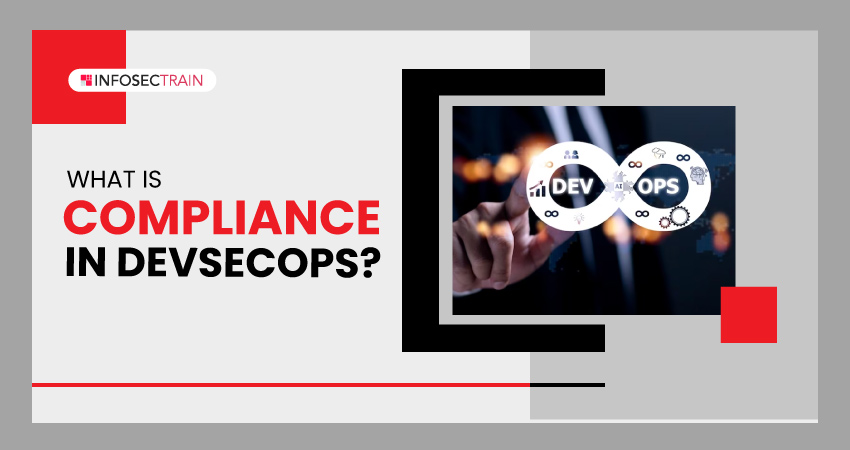What is Compliance in DevSecOps?
The need for security in the ever-changing world of software development has never been broader. Incorporating security into the development process becomes crucial as organizations work to provide software more quickly and effectively. A robust framework is offered by DevSecOps, a methodology that easily integrates security into DevOps practices. The idea of compliance is essential to this strategy since it ensures that security practices comply with organizational policies, industry standards, and legal obligations.

Table of Contents
What is DevSecOps?
DevSecOps Tools
The Significance of Compliance in DevSecOps
Benefits of Achieving Compliance in DevSecOps
What is DevSecOps?
DevSecOps, an advancement of the DevOps approach, places security at the center of the software development lifecycle. It seeks to break down organizational barriers between the development, security, and operations teams, enabling collaboration and communication to handle security concerns immediately. DevSecOps aims to establish a culture where security is not an afterthought but an integral part of the process by including security measures in each stage of development.
DevSecOps Tools
1. Control Gates:
Automated checkpoints known as control gates integrate into the development pipeline, ensuring security throughout the software development lifecycle (SDLC). These gates actively enforce security policies, thwart the introduction of vulnerabilities into code, and promptly detect and remediate security issues early in the development process.
2. SAST (Static Application Security Testing):
Security testing method SAST analyzes source code for vulnerabilities without executing the code. In this active process, SAST tools can identify various vulnerabilities, including coding errors, logic flaws, and insecure cryptographic practices.
3. DAST (Dynamic Application Security Testing):
Security testing method DAST tests applications while they are running. DAST tools actively identify vulnerabilities not detectable with SAST, including injection flaws, cross-site scripting (XSS), and insecure direct object references (IDOR).
4. SCA (Software Composition Analysis):
Software Composition Analysis (SCA) security testing method involves analyzing software components for known vulnerabilities. SCA tools actively identify vulnerabilities in third-party libraries, open-source components, and other software components utilized in an application.
The Significance of Compliance in DevSecOps
1. Regulatory Alignment:
Different industries are subject to different rules, such as PCI DSS for the banking industry and HIPAA for the healthcare industry. DevSecOps compliance ensures that security procedures comply with these legal requirements, protecting sensitive data and reducing legal risks.
2. Automated Compliance Checks:
DevSecOps is built on automation. Compliance checks are carried out using automated tools and scripts to ensure consistent execution of security. This proactive strategy finds and fixes security issues as they arise, preventing them from worsening.
3. Collaboration Across Teams:
Collaboration is the vitality of DevSecOps. Effective communication and cooperation across the development, security, and operations teams are essential to compliance initiatives. This collaboration culture ensures that security needs are well-understood and seamlessly incorporated across all teams.
4. Continuous Monitoring:
Due to the dynamic nature of compliance, security controls must be continuously monitored. DevSecOps uses automated technologies to continually evaluate and address security flaws and compliance violations throughout the development lifecycle.
5. Security as Code:
According to the DevSecOps framework, security is a collection of configurations, rules, and regulations maintained in code repositories. This approach makes possible version control, automated testing, and seamless interaction with the broader development process.
6. Audit Trails and Documentation:
Complete documentation is essential to compliance. Teams working on DevSecOps keep detailed logs of all changes and security measures. This paperwork acts as an audit trail to demonstrate conformity to security standards during compliance audits.
7. Risk Mitigation and Reputation Management:
DevSecOps compliance is essential for reducing security risks. Adhering to standards and best practices aids in preventative vulnerability management and protecting data and reputation. In the event of an incident, adherence to compliance serves as a buffer, limiting the adverse legal and financial effects. Fortifying defenses and establishing confidence in software development, DevSecOps compliance is not just a necessity but a strategic imperative when integrated effortlessly.
Benefits of Achieving Compliance in DevSecOps
1. Risk Reduction: Achieving compliance in DevSecOps finds and fixes security flaws, lowering the risk of incidents and possible breaches. This proactive approach protects sensitive data and intellectual property while reducing the effects of security risks.
2. Operational Efficiency: Compliance integration helps to improve DevSecOps workflow operational efficiency. The detection and resolution of security concerns are made more accessible by automated compliance checks and continuous monitoring systems. This effectiveness speeds up the development process and ensures that security controls are continuously used across the whole software development lifecycle.
3. Collaborative Security Culture: Achieving compliance helps the organization develop a collaborative security culture. Teams in development, security, and operations should work together more effectively by removing barriers. Due to the seamless integration of security practices made possible by this collaborative mindset, the development process is more safe and robust.
4. Competitive Advantage: Organizations that successfully implement DevSecOps compliance enjoy a competitive edge. It distinguishes them from competitors in the market and assures clients and partners of the effectiveness of the security measures implemented. This competitive advantage may be crucial for landing contracts and building stakeholder trust.
5. Legal and Financial Safeguards: Legal and financial safeguards are provided by following compliance requirements, which act as a barrier in the event of a security problem. As a legal and financial protection, regulatory agencies frequently consider an organization’s compliance efforts when deciding penalties. Legal obligations and related cost implications might be reduced with a well-established compliance structure.
About InfosecTrain
As an experienced provider of IT security training and consulting services, InfosecTrain offers specialized and affordable training solutions for enterprises and individuals globally. Our technical certification programs, like the Certified DevSecOps Engineer (E|CDE) course, are carefully designed to equip professionals with essential DevSecOps principles to prepare them for the future. You can create, install, and maintain secure apps and infrastructure with the help of our training. Invest in our flexible and thorough DevSecOps Engineer program to advance your career and benefit from our constant assistance at every step. We are committed to supporting your success in the dynamic DevSecOps environment.




 1800-843-7890 (India)
1800-843-7890 (India) 
